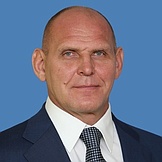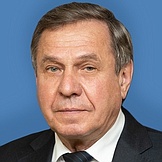Regional flags and emblems


PROFILE
Established 28 September 1937
Capital Novosibirsk
The Novosibirsk Region is part of the Siberian Federal District
Area 177,800 sq km
Population: 2 784 600 (2025)
Ethnic groups
(2020 National Census, %)
Russian – 94,15
Other – 5,85
Administrative divisions (2024)
Municipal districts – 30
City districts – 5
Rural towns – 26
Rural districts – 427
Geography and climate
The Novosibirsk Region is located in the southeast of the West Siberian Plain, near the Salair Ridge. The terrain varies from slightly slopping ridges to wide lowlands. The region is over 600 km at its widest point from west to east and over 400, from south to north. The Ob, Om and Chulym are the main rivers. The region also has lakes such as Chany (salt lake) and Ubinskoye as well as the Novosibirsk Reservoir.
The region borders the Altai Territory and the Kemerovo, Omsk and Tomsk regions. It also has a state border with Kazakhstan.
The climate is continental, with January temperatures averaging –21.4°C and July temperatures averaging +18.2°C. Precipitation averages 17 mm in January and 54 mm in July.
The region has the Kirzinsky State Federal Natural Sanctuary and Vasyugansky State Nature Reserve, as well as 24 regional natural sanctuaries and 54 regional natural landmarks.
Government
The legislative branch is represented by the Legislative Assembly of the Novosibirsk Region, which is the permanent, representative and only body of legislative authority in the region. It has 76 deputies elected for five years, with 38 running in single-mandate constituencies and the other 38 in the single electoral district in proportion to the number of votes cast for lists of deputies nominated by electoral associations.
The current Legislative Assembly was elected in September 2020. Its term expires in September 2025.
The executive branch of the Sakhalin Region is represented by the Governor of the region, the Government of the region and other executive agencies in the Novosibirsk Region. The Government of the Novosibirsk Region is the supreme and permanent body of executive authority in the Novosibirsk Region headed by the Governor of the region.
The Governor of the Novosibirsk Region is the region’s highest-ranking official, elected for five years by Russian citizens who permanently reside in the region. The term of the current incumbent expires in September 2028.
Economy and natural resources
The Novosibirsk Region is a well-developed industrial region. Heavy industry, which accounts for about 20% of Siberian machinery manufacturing, is especially important. The companies with the highest volume of shipped goods are Elsib, which designs and produces turbine generators for hydroelectric power stations and heating power stations, and large electric oil and gas equipment purchased by all Russian regions; Sibelectroterm JSC, the largest Russian machine building plant that produces heavy electrothermal equipment; Elektrosignal Corp, the leading communications developing and producing company; Tyazhstankogidropress that produces a wide range of rollover tables used to install and secure details on milling and boring machines; and Stankosib JSC, the oldest Russian machine-building company.
The non-ferrous industry is known for the only rare-metal and nuclear-fuel production plant in Russia, the Novosibirsk Chemical Concentrate Plant. The Kuzmin Novosibirsk Metallurgic Plant produces flat steel, cold-rolled strips and a wide range of pipes.
The region has 50 military complex organizations. The Chkalov Novosibirsk Aviation Plant, a branch of the Sukhoi Company, is the largest defense contractor that specializes in aircraft manufacturing.
The main raw materials extracted in the region include coal, turf, high-melting clays, oil and gas as well as high-quality anthracites. Siberian Anthracite is the largest coal-extracting company in the region. Oil and natural gas are extracted in the northwest Novosibirsk Region, with Verkh-Tarskoye being the largest oil field.
Agriculture accounts for over 5% of the regional GDP. The agro-industrial sector meets the region’s demands in cereals and grains as well as potatoes, locally grown vegetables, dairy and meat products and eggs. Modernization of the livestock sector is a priority for the region’s agricultural development.
The developing international and foreign economic ties of the Novosibirsk Region have positive influence on the region’s socioeconomic situation. China, Kazakhstan, the US, India, France, Germany, Belarus, Bulgaria, Venezuela, South Korea and Japan are the main trade partners.
Conditions for innovation activities are being established and developed in the region, including the Industrial Park at Novosibirsk Academic Town, the Novosibirsk Industrial Park, the Biotechnology Industrial Park at Koltsovo Science City, a medical industrial park and business incubators, including those at universities.
The research and education includes 52 academic institutions, over 40 sectoral institutions and internationally recognised research institutes at the Siberian branch of the Russian Academy of Sciences.
The main institutions include Kutateladze Thermal Physics Institute, Boreskov Catalysis Institute, Budker Nuclear Physics Institute, Sobolev Geology and Mineralogy Institute, Trofimuk Institute of Petroleum Geology and Geophysics, Non-Organic Chemistry Institute, Institute of Solid State Chemistry and Mechanochemistry, Theoretic and Practical Mechanics Institute, Economy and Industrial Organisation Institute, and Cytology and Genetics Institute. Tsivyan Traumatology and Orthopedics Novosibirsk Research Institute, Meshalkin Blood System Pathology Novosibirsk Research Institute and the State Research Center of Virology and Biotechnology VECTOR are also important scientific centers of the region.
Culture and tourism
The region’s cultural life is active and diverse. Novosibirsk is a leading theatre and music center: it has nine state theatres, including two music theatres, three state concert halls and several dozen acting companies and production centers. The Novosibirsk State Academic Opera and Ballet Theatre, which is one of the largest in Russia, is considered the symbol of Novosibirsk. The Novosibirsk Philharmonic Hall and the Glinka State Conservatory are known around the world.
The Novosibirsk Region is one of the few Russian regions that hold major cultural events. The International Christmas Art Festival provides Novosibirsk residents with a unique opportunity to see the best achievements of the Russian and foreign arts. The Sib Jazz Fest international jazz festival has an unprecedented number of world-class stars. Hundreds of artists present their work at the modern graphics international biennale held at the Novosibirsk State Art Museum. The Novosibirsk Transit interregional theatre festival and contest featuring the best professional teams from Siberia, the Urals and the Far East attract many theatre connoisseurs.
The region has a historical landmark called Umrevinsky Ostrog, a fortress built by Cossacks in the early 18th century at the conflux of the Umreva and Ob rivers. The Kirzinsky State Federal Natural Sanctuary is considered a Russian wonder designed to preserve and restore rare and endangered species of plants and animals. The sanctuary has over 50 lakes, with the largest being Tabiss, Bolshoye Shchuchye and Peschanoye. Lake Chany and the Shchuchy Ozyora swamplands are the main hydrologic sites.
The Novosibirsk Region has a significant and diverse potential for developing domestic and inbound tourism. The natural, cultural and balneal diversity make it possible to develop many types of tourism, including the most popular, such as recreational, health, sport, business, educational, scientific and rural as well hunting and fishing. In recent years, 11 ski resorts and 12 hunting bases have been established. The region’s tourism and recreation complex also includes 133 hotels, 35 health resorts and 27 recreation camps.


